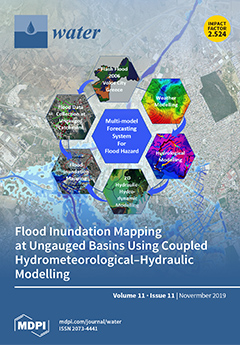Macrophytes are important structural attributes of freshwater ponds and wetlands, affecting zooplankton community composition. One of the best-known macrophytes in the world is
Eichhornia crassipes, which, due to its high reproductive rate, can quickly occupy large areas of aquatic environments. However, there
[...] Read more.
Macrophytes are important structural attributes of freshwater ponds and wetlands, affecting zooplankton community composition. One of the best-known macrophytes in the world is
Eichhornia crassipes, which, due to its high reproductive rate, can quickly occupy large areas of aquatic environments. However, there have been few assessments of the direct effect of this macrophyte, in the absence of predators, for tropical zooplankton communities. The aim of this study was to evaluate the influence of
E. crassipes on microcrustacean community structure using species and functional diversity, the latter providing an important tool to evaluate the response to changes in resource availability along an environment gradient. We also evaluated which functional traits were favored when the structural niche offered by submerged parts of the macrophytes was present. We conducted a 30 day mesocosm experiment (117 m
3) with and without the presence of floating macrophytes (
Eichhornia crassipes) inserted along one edge of the mesocosms. Treatment effects on microcrustacean density and community structure using taxonomic and functional classification approaches were assessed. There was a positive association between macrophyte presence and microcrustacean diversity for both diversity types, showing that the presence of macrophytes enhanced the niche availability for the microcrustacean community, likely through changes to resource diversity through habitat structure provision. In the presence of macrophytes, the abundance of species with the following feeding traits increased: burrowing, benthic habitat preference, and herbivore–detritivore and omnivore–carnivore trophic groups. Results showed that the species capable of using the niche offered by submerged macrophyte structures had benthic traits, enabling their co-existence with species possessing primarily pelagic traits. Using a functional approach, our study demonstrated that
Eichhornia crassipes can structure microcrustacean communities and promote diversity, likely via increased habitat diversity, which enables the co-existence of species possessing different adaptations to acquiring resources available in the environment.
Full article





